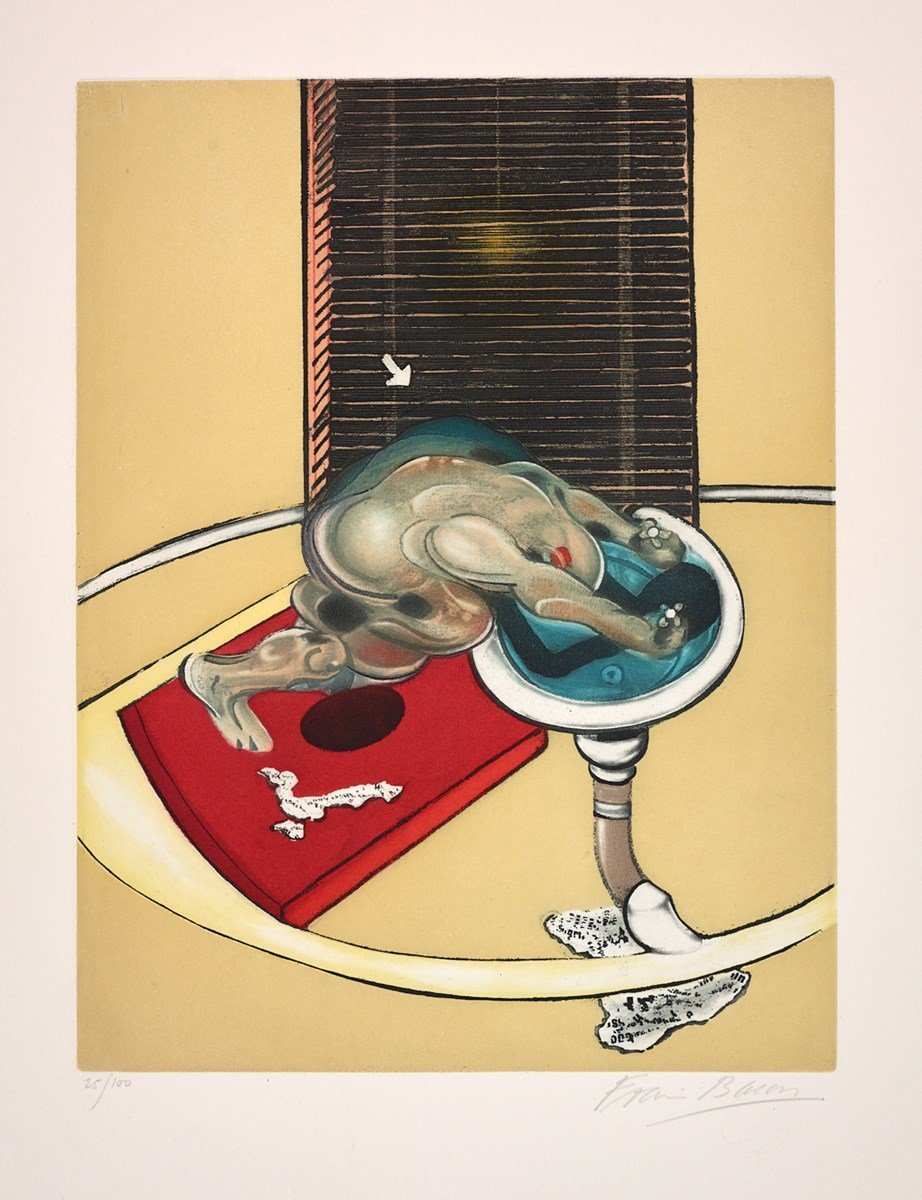THE HORROR, THE HORROR | FRANCIS BACON
Margaret Thatcher famously called him ‘That man who paints those dreadful pictures’ and Francis Bacon’s work, always full of existential anguish, certainly divided critics throughout his five-decade career, his shocking images simultaneously intriguing and repulsing his viewers.
Francis Bacon, L’homme au Lavabo, etching and aquatint, 25 in a series of 100. Courtesy of Clarendon Fine Art.The Dublin-born artist, openly gay in a time when homosexuality was illegal, came of age amid the traumas unleashed by WW2 and his emotionally charged, raw paintings reflected his profound emotional turbulence.
From the mid-sixties, Bacon worked with skilled printers to produce etchings and lithographs of a small selection of his paintings. Here we feature L’homme au Lavabo, an etching with aquatint print published in 1978 by Éditions Georges Visat, Paris, after his 1976 painting Figure at a Washbasin. The print is currently on view (and on sale) in Clarendon Fine Art’s Dover Street gallery.
This man is not simply washing his face, or having a shave. His body is shuddering and shaking, and he appears to be attempting to escape from the torments of the world down through the plughole of his basin.
This is, surely, a reference to the death of Bacon’s lover George Dyer, in 1971. Dyer was found dead in the bathroom of a Paris hotel after a drink and drugs overdose, just before a major exhibition of Bacon’s work at the Grand Palais. The artist continued to paint representations of his late muse until his own death in 1992.
The image, like so many of Bacon’s images, emanates horror. Yet its composition emanates harmony, in equal measure: the tragic central figure, encircled by the basin, and set off by the crimson rug, is brought into relief by the dark blind and ochre field behind. There is beauty in the horror. We are repulsed; we are intrigued.
Bacon wasn’t, he repeatedly stated, trying to shock his viewers; merely trying to reflect his own inner turmoil and anguish, as best he could, as beautifully as he could. As he put it: “you can’t be more horrific than life itself”.
Clarendon Fine Art, MayFair

